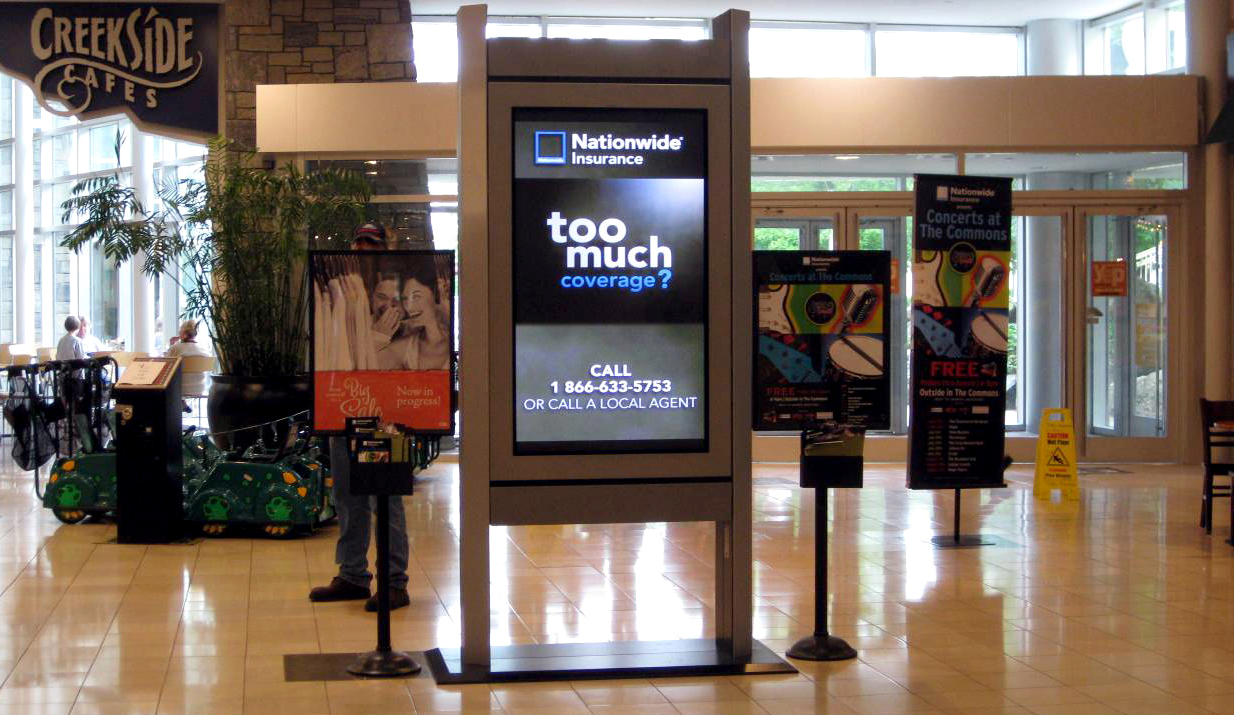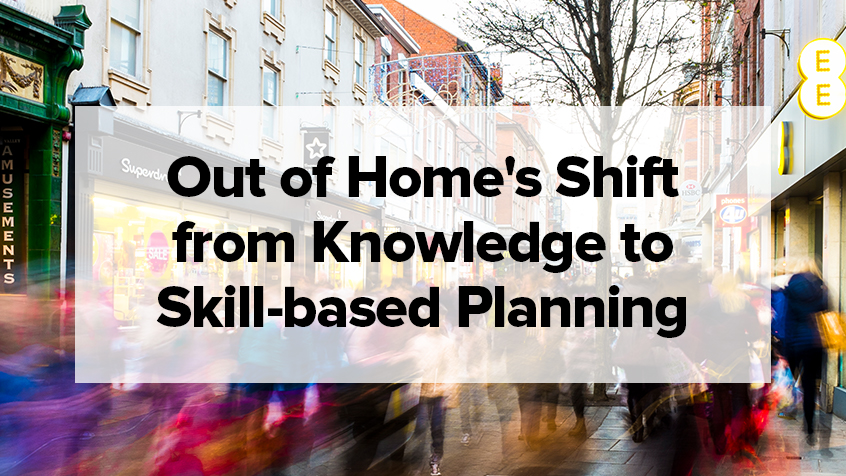When British Airways took home the Cannes Lion this year for their amazing “Look Up” (link) campaign it was a wake-up call for anyone who hadn’t noticed: Digital out of home has arrived. It is a fully established media with the potential to be a creative tour de force for marketers who are connecting the dots between the display, its environment, and available real-time data.
By now everyone is familiar with the growth of digital billboards—there are now almost 5,000 across the country—and with the benefits they bring: dayparting, use of multiple creatives, context based creative content (ie, weather or traffic conditions, sport scores, etc). Now digital screens are being introduced to other traditional out of home media as well, like transit shelters, rail stations, airports and more.
But the more dramatic recent growth has been in the expansion of digital place based networks. Now advertisers have access to digital out of home media in malls, gas stations, fitness clubs, coffee shops, bars, restaurants, grocery stores, golf courses, doctors’ offices and more. The Outdoor Advertising Association of America (oaaa.org) indicates there are now 300 digital place based networks available. According to a new study by market research firm PQ Media “Consumer Exposure to Digital Out-of-Home Media Worldwide 2014, “the average global consumer was exposed to various DOOH media for 14 minutes per week in 2013, a 75% increase from only eight minutes in 2007”. (link)
What opportunities do these new environments bring? They provide advertisers the means to be even more highly targeted and creative when selecting media to reach their demographic, and can more closely align the advertisers’ needs to the OOH audience state of mind.
One of the advantages of digital out of home media is the creative flexibility it provides, and without additional production costs, or posting cycles creative teams and outdoor media buyers have no reason to limit their desires. In our recent campaign for rideshare startup Lyft, they were able to use multiple creatives for each media, and customize them according to market.
Digital out of home is also highly effective in prompting consumers to take action. According to a survey by the Out-of-Home Marketing Association of Canada, “One-half of… adults claim to have taken action after seeing digital out-of-home advertising. Going to a website or seeking further information are the two most frequent actions.” (link) As the media continues to develop, integrating more interactive capabilities like touchscreens and gesture control, NFC and social media integration, the screens will start to become a natural extension of a brand’s online and physical presence that can facilitate interaction and direct engagement.
The digital out of home media landscape is changing so quickly that advertisers and agencies are scrambling just to keep up, to say nothing of taking full advantage of the data and capabilities that are becoming available. Many agencies struggle to simply understand where it falls in their media plan – is it digital? Broadcast? Out of home? But as marketers continue to think creativity about digital environmental messaging, those categories will ultimately be less important than the creativity and consumer connection made via the screens.





